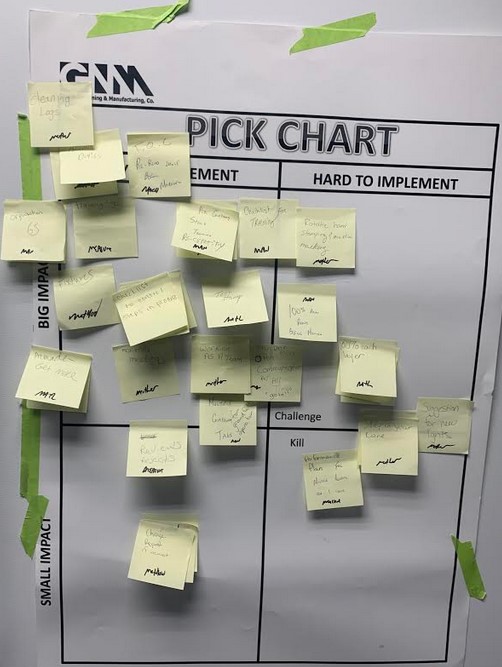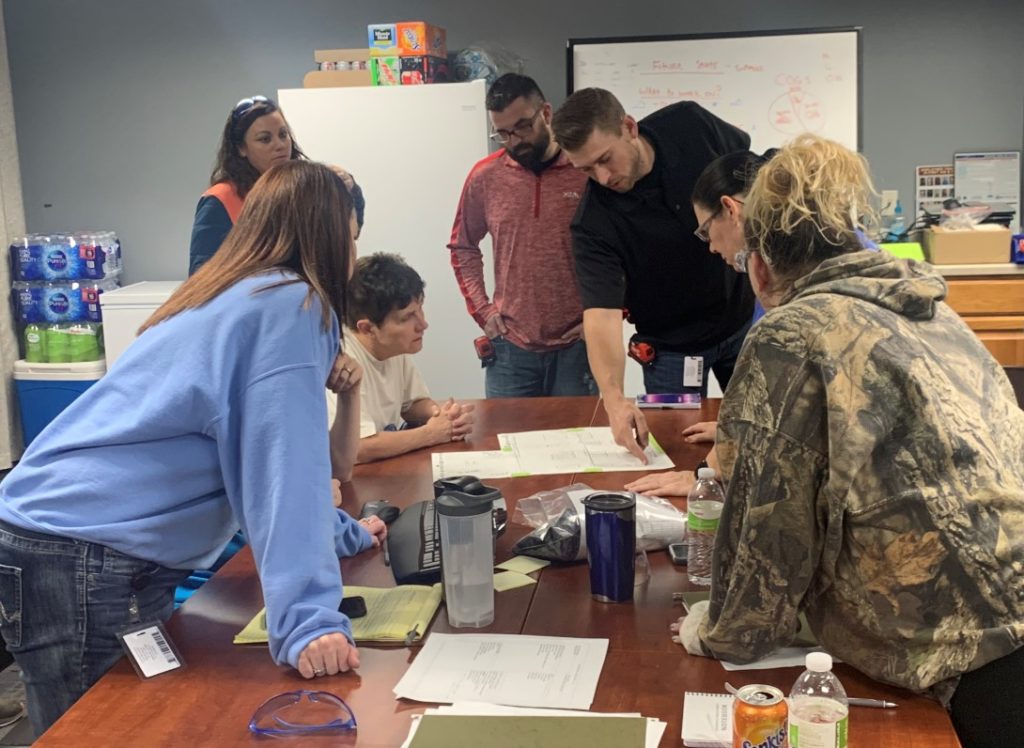Last week I shared the importance of developing and A3 or project charter for your kaizen events. This week I want to share my kaizen event sequence of events. I have led over 450 kaizen events in my career and I have a good sequence of events. Here is how to hold a successful kaizen event!
Day 1- Review A3, event calendar, VSM, waste walk, and brainstorm
Because I didn’t include and ice breaker or introductions, I am assuming everyone in the event knows each other. If not, then do introductions. Since you’ll be spending several days together, you’ll know each other well, soon enough. Gather them together with social distance guidelines and take a team picture.
Review the A3 and event calendar with the team. Make sure that everyone can participate in the event the entire time. Let everyone know that the kaizen report out has been scheduled for the final day of the event. Make sure everyone knows when lunch is, etc.
Review the Value Stream Map of the process(es). It is helpful for everyone to have a copy of the value stream map they can refer to. Talk about the objectives from the A3 and how they impact the value stream. Using your Value Stream Map, take a waste walk.
Have everyone take notepads with them. As a group, walk the Value Stream Map backward. Make note of areas where you see the eight wastes- defects, overproduction, waiting, not listening to people’s ideas, transportation, inventory, motion, and excess processing. Ask questions about how long it takes to do things, how many systems are used, and why there is WIP laying around.
Make notes on the pads that the team is using. When you return to the room where you are having your kaizen event, have everyone place the wastes they noticed on sticky notes and place them on a DOWNTIME chart. It’s ok if people identify the same wastes, just aggregate them. The key is to get people up and involved.
Finally, after all of the wastes have been identified, brainstorm solutions to eliminate the waste. In the example below, those ideas are identified in green.

Now that you have brainstormed ideas to eliminate the waste, choose the best options to implement. I like to use an impact/effort matrix to narrow down options. This is also referred to as a P.I.C.K. chart. The initials are Plan, Implement, Challenge and Kill.
If you are able to get this far on the first day of the kaizen event, you are doing incredible!

Day 2-4 Decide what to implement and make changes
Focus on opportunities in the implement box on the PICK chart. These should be easy to do, high impact opportunities. Sometimes the event dictates what will be implemented. For example, if the event is to develop a manufacturing cell, your waste walk and PICK chart opportunities will be less. Regardless, by the second day, your kaizen team should know what they want to implement and begin taking action.
Go to the floor and move the equipment. Split up office processes and assign elements of change to different team members. Develop new processes and evaluate them with others already operating within the process.
After you have made the changes you want, trial the new process to see if you get the results you were expecting. Look for bottlenecks, delays, WIP, etc. These are indicators of delay or uncertainty.
Gather feedback from everyone within the process about the changes. Ask if they can identify any opportunities for further improvement. Realize they will have to live with the changes day-to-day.
Day 5 Team report out and action item list
On the last day of the kaizen event, you need to report out the results to the leadership team. I develop small PowerPoint presentations and assign 1-3 slides to each member of the team to present. I’ve seen companies have the team members sit in chairs without a presentation and talk about what occurred.

There is no right or wrong way to do a report out and I’ll cover more in-depth next week on how I conduct the ones I lead. The important take-away is that a report out is a must for any kaizen event that you conduct. It helps the employees meet the leadership team, they get to share what went on and it increases employee engagement.
Along with a report out, it’s important to develop an action item list. These are the activities within the kaizen that you didn’t have time to get to or were good ideas and need to be implemented in the future. Training the entire department on the new process often falls into this category. Developing standard work often does as well. There might be items that were ordered and haven’t arrived on-site. Anything that didn’t get competed in the kaizen event needs to go on the action item list.
Assign action items to individuals with dues dates. I suggest printing out the action item list and placing it in the area where the event occurred. Employees will help remind the action item owners that they need to get their items closed. I see it happen every time.
I know that if you follow this framework you will have successful kaizen events!
It is an honor to serve you, and I hope that you and your company are getting better every day!
Follow me on Twitter
Join me on LinkedIn
Listen to the podcast here

